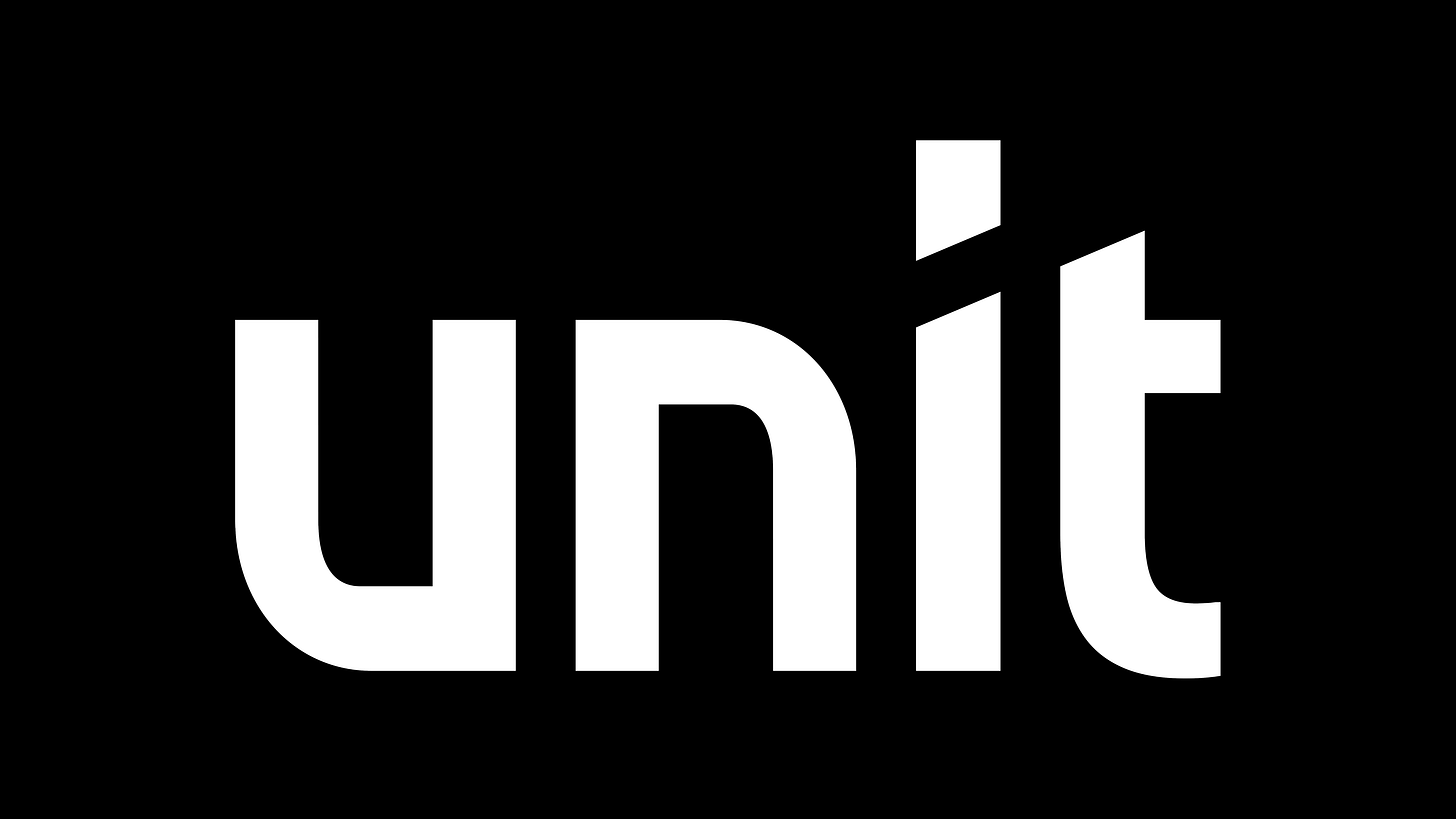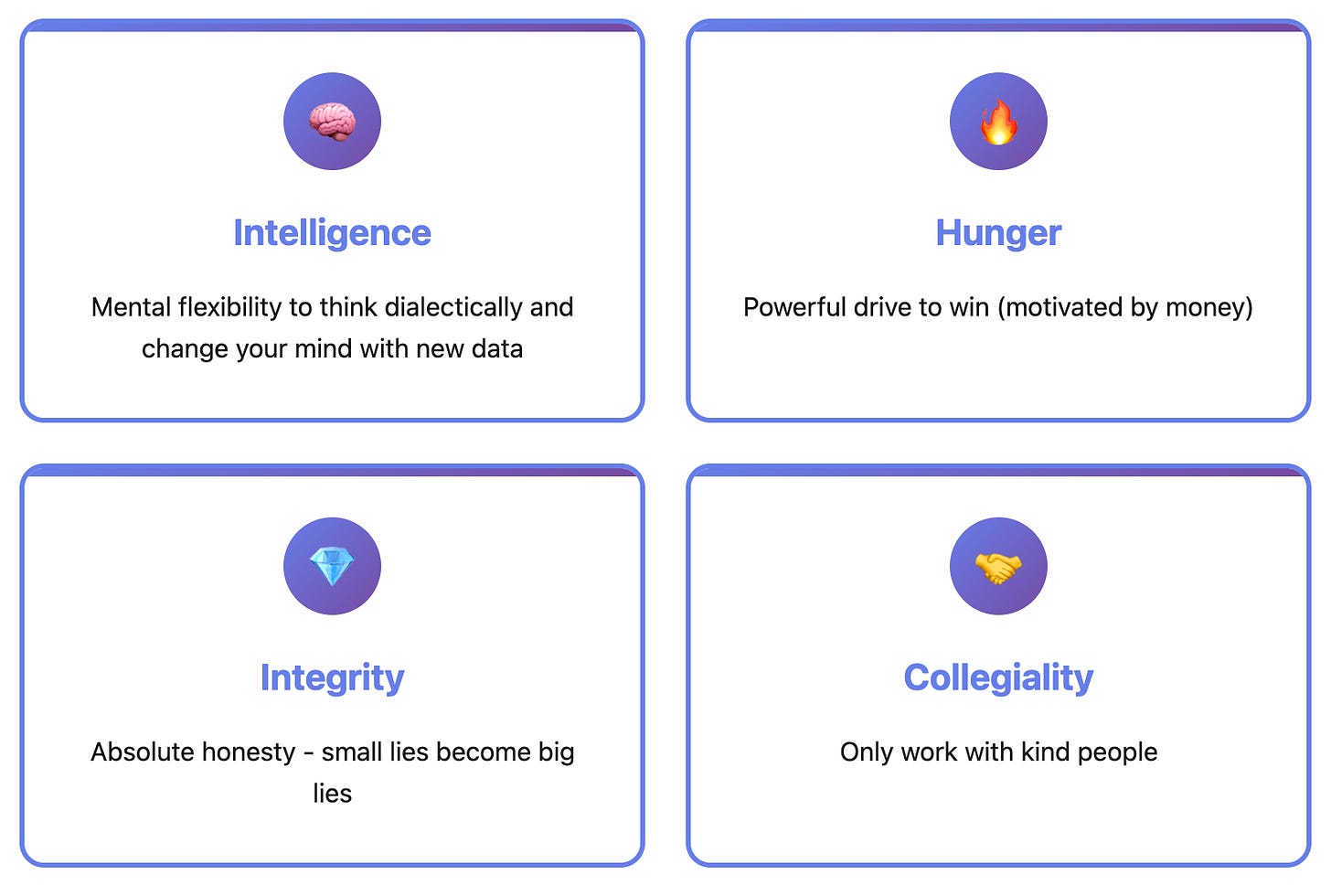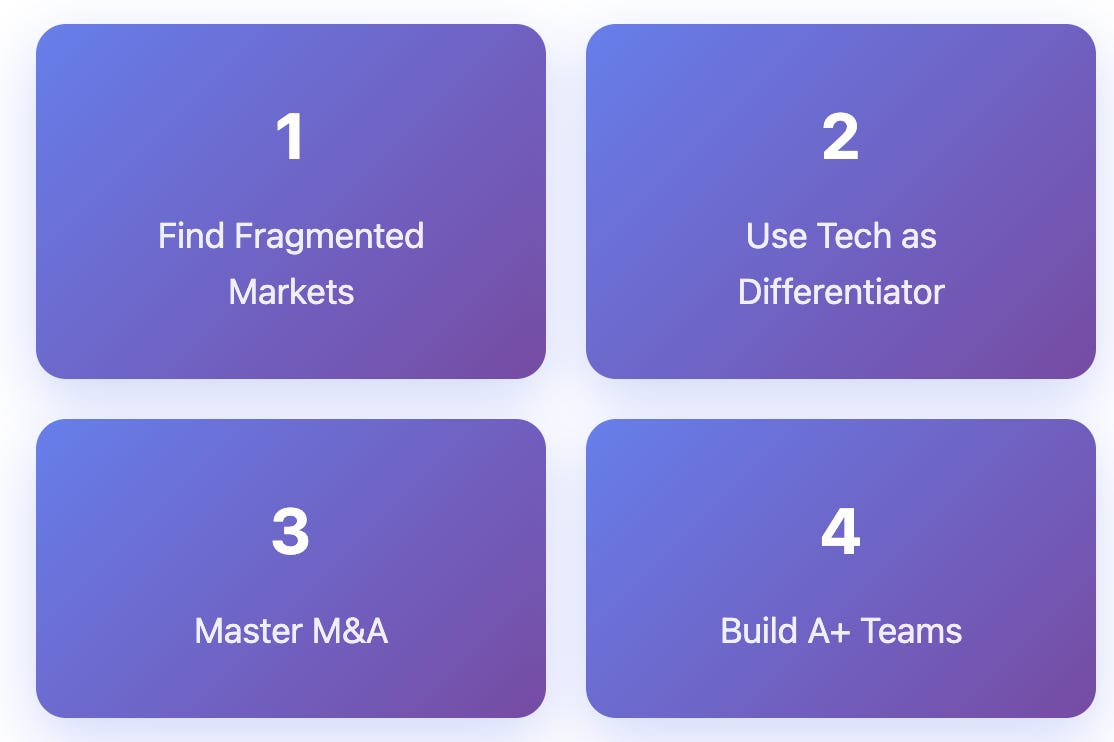Linear #150: The Brad Jacobs Edition
One vSaaS breakdown. One biz story. One 'how to'. In your inbox once a week.
Today’s newsletter is sponsored by Unit, the leading embedded finance platform for vertical SaaS.
Become the financial OS your customers rely on. With Unit’s Ready-to-Launch solutions, you can embed capital, banking, and bill pay in weeks - zero build required. Trusted by platforms like Bill.com, HoneyBook, and Homebase.
Learn more at unit.co
Alright, let’s get to it…
I just finished listening to David Senra’s episode on Brad Jacobs, and holy shit, this guy is an absolute masterclass in vertical market domination.
If you haven’t heard of Brad Jacobs, let me paint you a picture: This is a guy who has built not one, not two, but EIGHT separate billion-dollar companies. His net worth? North of $4 billion. His secret? He basically figured out the ultimate vSaaS+M&A playbook before vertical SaaS was even a thing.
And the craziest part? He’s used essentially the same exact strategy every single time.
So what can we learn from this absolute legend? Let me break it down.
Brad Jacobs & The Art of “Seeing Order in Chaos”
Brad Jacobs didn’t start out as some tech genius or silver-spoon entrepreneur. At 23 years old in 1979, he started Amerex Oil Associates with just a few thousand bucks. Within four years, he was doing $4.7 billion in annual brokerage volume.
Say whaaaaaaaat?
His advantage? Information speed. While everyone else in oil trading was waiting for McGraw Hill’s daily newsletter, Jacobs built a primitive database system (basically a proto-internet) where his team logged real-time buyer/seller activity. This gave him hours of advantage in a world where hours meant millions.
But here’s where it gets interesting for us in the vSaaS world...
After selling that business and building Hamilton Resources to $1 billion in revenue through oil trading, Jacobs saw the big banks entering his space. Instead of fighting giants, he did something brilliant: He looked for the next fragmented, boring industry he could consolidate.
That industry? Waste management.
Think about it. In 1989, the two largest waste companies in the US were printing half a billion in profit just to pick up trash and send invoices. Jacobs realized the big players focused on major cities while thousands of mom-and-pop haulers dominated smaller regions.
The fragmentation was insane. The opportunity was massive.
He founded United Waste Systems, took it public in ‘92, and sold it to Waste Management for $2.5 billion in 1997. The stock delivered a 55% compound annual growth rate, outperforming the S&P 500 by 5.6x.
But wait, there’s more.
In 1997, he did it again with United Rentals in the construction equipment space (85% mom-and-pop owned). He built it to $1 billion in revenue in ONE YEAR and took it public. Today? It’s a “100-bagger” – the stock has increased over 100-fold from its initial price.
Then came XPO Logistics in 2011, which he grew through 500+ acquisitions into a top-ten global logistics provider. The stock increased 32-fold from 2011-2022. It was the 7th best-performing Fortune 500 stock of the 2010s.
And now? He’s doing it again with QXO in the $800 billion building products distribution market. He recently acquired Beacon Roofing Supply for $11 billion, instantly becoming the largest distributor of roofing and waterproofing materials in North America.
Same playbook. Different vertical. Billions in value creation. Every. Single. Time.
One vSaaS Breakdown: The Brad Jacobs Consolidation Formula
So what exactly IS the Brad Jacobs playbook? After studying his career brick by brick, I’ve identified his exact formula. And spoiler alert: it’s basically what we’re all trying to do in vertical SaaS, just with M&A steroids.
Step 1: Find The Right Fragmented Market
Jacobs doesn’t just randomly pick industries. He has very specific criteria:
Large TAM ($800B+ building products, massive waste management, huge equipment rental)
Highly fragmented with tons of mom-and-pop operators
Low technology adoption (massive opportunity to drive efficiency)
Growing faster than GDP (riding a macro trend)
Strong free cash flow characteristics
Operational inefficiencies everywhere you look
As Jacobs says: “I look for seeing order in chaos.”
Think about this for a second. Every vertical SaaS founder reading this should be asking: Is MY vertical fragmented enough? Is there consolidation opportunity?
Because if there is, you’re not just building software. You’re potentially building the platform that enables the entire consolidation wave.
Quick Ask - Check out / subscribe to VERTICALS - our new podcast
Subscribe Now —> Youtube | Spotify | Amazon | Pod Bean
Step 2: Technology Is The Differentiator
Here’s what separates Jacobs from traditional private equity roll-ups: He weaponizes technology.
At United Waste, he built mapping tech to optimize routes and drive operational efficiency
At United Rentals, he created software to enable real-time dynamic pricing (demand high? Raise prices. Demand low? Lower them.)
At XPO, he invested heavily in logistics technology and AI
This is the vSaaS opportunity hiding in plain sight.
The lesson? Software is the moat that makes consolidation work.
Step 3: Master M&A Without Imploding
Jacobs has done over 500 acquisitions in his career. That’s not a typo. Five. Hundred.
His approach to M&A is surgical:
The “Bingo Quadrant” - He targets large, high-risk deals where the risks are solvable problems. These are the “big, hairy” deals that scare competitors but offer massive returns if you have the operational chops to fix them.
Speed + Discipline - He does homework in advance so he can move fast, but he’ll walk away last-minute if red flags emerge. (He learned this the hard way when a PE firm backed out of a $7 billion United Rentals deal during the 2008 crisis.)
Integration Playbooks - Every deal has a detailed integration plan with specific tasks assigned to individuals (never committees). He focuses heavily on culture, asking new employees what to keep and what to change.
His philosophy? “The deals you DON’T do are as important as the ones you do.”
For vSaaS founders thinking about M&A as a growth strategy (or eventual exit), this is critical. The winners in vertical SaaS won’t just build great software – they’ll become the platform that consolidates entire industries.
Step 4: Build An Outrageously Talented Team
Jacobs is religious about talent. He says: “The smartest thing I do as a CEO is make sure most of the people I hire are smarter than I am.”
He only hires A+ players based on four characteristics:
His hiring process? Often 7-8 interviews plus written questionnaires. And he’s willing to “overpay” for superstars.
The Resignation Test - He imagines each employee resigning and gauges his gut reaction:
Relief = C player
Manageable disappointment = B player
Panic = A player (retain at all costs)
This is the stuff that separates billion-dollar companies from million-dollar ones.
How To Identify YOUR Brad Jacobs Opportunity
Okay, so you’re not Brad Jacobs (yet). You probably don’t have billions in capital to do 500 acquisitions. But you CAN apply his framework to find massive vertical SaaS opportunities.
Here’s exactly how:
Step 1: Identify Fragmented Markets With Consolidation Potential
Ask yourself these questions about your target vertical:
Is the market large enough? (Minimum $10B+ TAM, ideally much larger)
Is it highly fragmented? (Thousands of small operators, no dominant player with >10% share)
Is technology adoption low? (Still using Excel, paper, manual processes)
Are there strong unit economics? (Good margins, recurring revenue potential)
Is there a macro trend? (Regulatory changes, generational shift, technology disruption)
If you can check 4-5 of those boxes, you might be sitting on a goldmine.
Step 2: Build The Software That Enables Consolidation
Here’s the key insight: You don’t need to BE the consolidator. You can be the PLATFORM that consolidates.
Think about what Jacobs did:
Mapping software for waste management
Dynamic pricing for equipment rentals
Logistics optimization for supply chain
Your vSaaS product should be the technology layer that makes consolidation possible.
This means:
Multi-location management
Centralized reporting and analytics
Operational efficiency tools
Integration capabilities for bolt-on acquisitions
Industry-specific workflows that drive standardization
When you build this right, you become essential to the consolidation wave. Private equity firms will use YOUR software to roll up the industry.
Step 3: Position Yourself As The Consolidation Play
Once you’ve built the platform, your positioning changes completely.
You’re not just selling software. You’re selling:
“The Operating System for [Your Vertical]”
“How PE Firms Roll Up [Your Industry]”
“The Platform That Enables Multi-Location [Vertical] Operations”
This changes everything:
Your ICP expands to include PE firms and consolidators
Your deal sizes get much larger
Your valuation multiples increase (you’re infrastructure, not just software)
Your competitive moat becomes nearly unassailable
Step 4: Think Like An Operator, Not Just A Software Company
Here’s where most vSaaS founders miss the opportunity.
Jacobs doesn’t just buy companies and integrate them. He dramatically improves operations through:
Best practice sharing across locations
Technology-driven efficiency gains
Centralized procurement and negotiations
Data-driven decision making
Your vSaaS should enable all of this.
Build features that:
Identify operational best practices automatically
Benchmark performance across locations
Surface improvement opportunities
Enable knowledge transfer between operators
When your software makes existing operators more profitable, they’ll never leave. When it enables consolidators to extract more value from acquisitions, they’ll pay anything for it.
Step 5: Embrace Problems As Opportunities
This is probably the biggest mindset lesson from Jacobs.
He learned from his mentor Ludwig Jesselson:
Jacobs treats every problem as “an uncut diamond to polish into value.”
For vSaaS founders, this means:
Customer churn? That’s data telling you where to improve your product
Competitor undercutting you? That’s an opportunity to add more value
Industry consolidating? That’s a massive opportunity to be the platform
Problems are how you find the path to billions.
The Bottom Line
Brad Jacobs has proven something incredibly valuable for every vSaaS founder: Boring, fragmented industries become billion-dollar opportunities when you add technology and operational excellence.
His playbook is:
He’s done it eight times. EIGHT TIMES.
And the opportunities are still everywhere. Construction. Field services. Healthcare specialties. Legal services. Accounting. Manufacturing. Distribution.
The question isn’t whether there are Brad Jacobs-sized opportunities in vertical SaaS. The question is whether you’re building the platform that enables the consolidation.
Are you?
Have a product or service that would be great for our audience of vertical SaaS founders/operators/investors? Reply to this email or shoot us a note at ls@lukesophinos.com












Biggest lesson - replicate the winning strategy. Don't do random things. There aren't that many people who launched multiple unicorns, so Brad is definitely someone to learn from